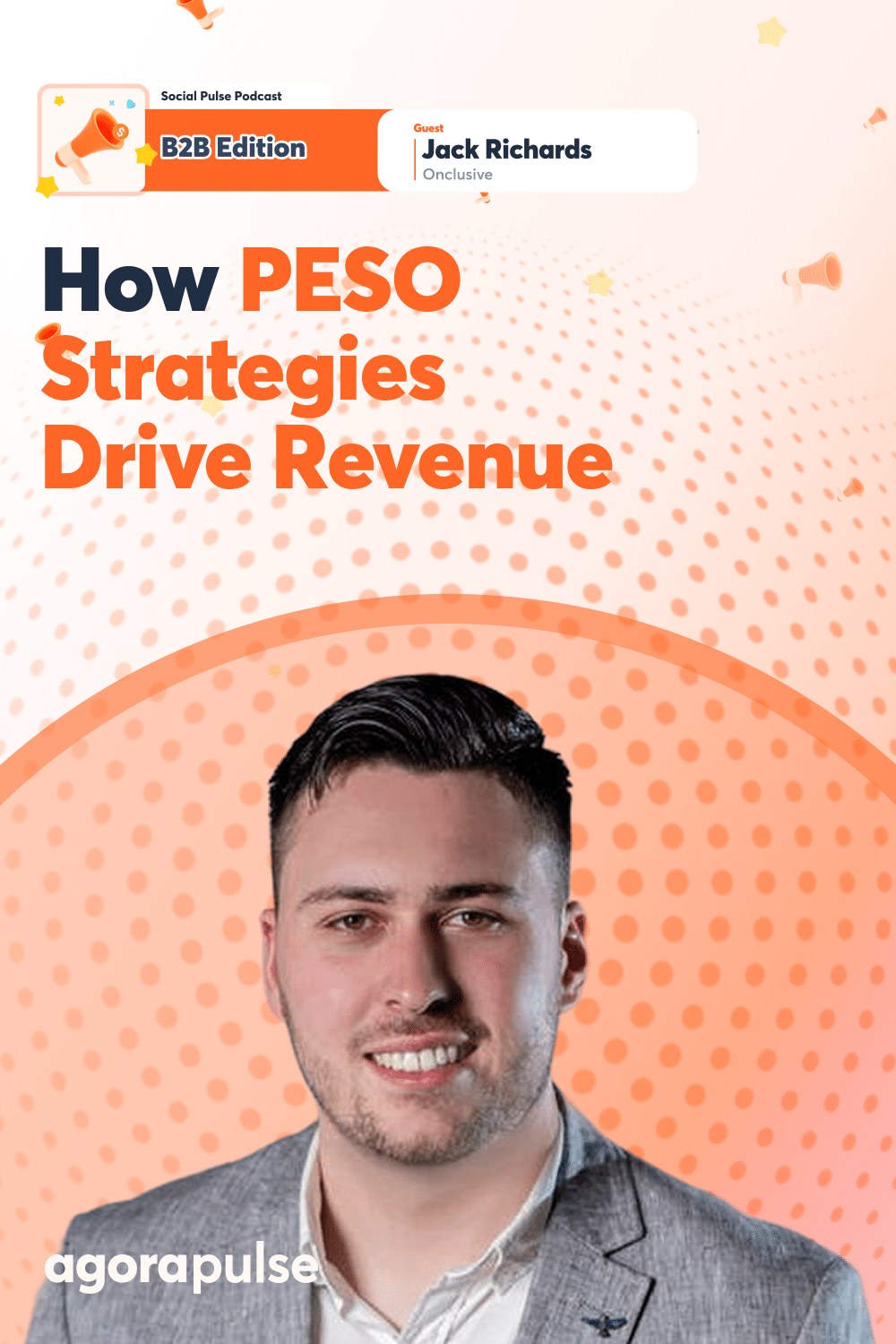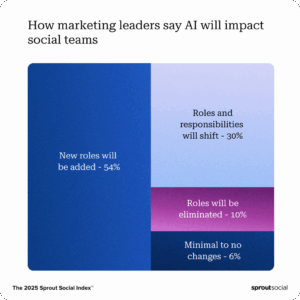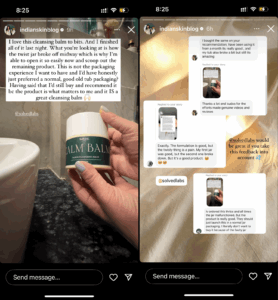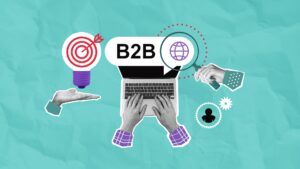Navigating the intricacies of paid, earned, shared, and owned PESO media across diverse markets can often feel overwhelming. With each region bringing its own cultural quirks and digital landscape, crafting campaigns that both resonate locally and drive global revenue can be daunting.
In this recap of Social Pulse: B2B Edition, powered by Agorapulse, guest Jack Richards, a renowned leader in global marketing integration, is currently steering strategies.
At Onclusive, Jack has honed the ability to seamlessly weave PESO initiatives across continents, transforming them into powerful revenue engines. His expertise offers invaluable insights into tailoring PESO models to fit varied cultural and digital environments. He creates campaigns that are as impactful as they are strategically aligned.
[Listen to the full episode below, or get the highlights of the Social Pulse Podcast: B2B Edition, powered by Agorapulse. Try it for free today.]
Could you share your approach to integrating these PESO strategies across all these diverse regions that you’re working in?
Jack Richards: Yeah, I think it comes down to understanding your audience, right? It’s so easy to build a campaign out of the box or based on an audience that you created 5-10 years ago, or something far too generic.
Newsflash: Your 2019 market research is out of date. Your 2021 customer survey is now wrong. Your NPS is out of date when you’ve done it, as it was 24 hours ago. So for us, it’s about getting close to your audience and closing that gap between you and them, but also starting with objectives in mind. And these may vary by market or by campaign.
For example, I know in my mind, realistically, which are the three markets that are growing to grow this business. That said, there is still huge importance and huge emphasis based on those emerging markets and what they can do for awareness, volume of conversations, engagement particular performance metrics within certain channels.
That doesn’t necessarily mean it’s going to translate to the middle and bottom of funnel, but by starting with those objectives in mind, we are starting to integrate PESO in a far more sophisticated way.
And the final thing is understanding ROI and what good looks like.
What does a good CPC or CPL look like in Spain versus the US?
For example, a thousand dollars might be great in the US, but it might be awful in Spain. It might need to be a hundred dollars, for example, and not comparing apples with oranges. And all of that comes down to—then you look at that PESO model and you understand with that audience in mind, with the objectives in mind, with that idea of what good looks like in mind.
Where do I weigh PESO? So, where do I put more budget, more time, more resources, more emphasis? And that’s something I’m proud of: the progress we’ve made at Onclusive in the last couple of years.
Tell us more about Onclusive.
Jack Richards: Sure, so [at] Onclusive, we like to see ourselves as a partner for PR, marketing, and just broader communications success, really about proving and improving value.
We all know that when budgets are cut, marketing or communications is often the first or one of the first functions to be looked at. So, how do you understand not only those reputational drivers, but also how to demonstrate and improve impact? So we support PR, marketing, and comms practitioners across the whole workflow or, as I like to see it as, workday, from when you receive a breaking news alert in the middle of the night, through our social listening platform, Onclusive social, with chatter online about something that might have happened relating to your brand, then responding by distributing a press release through our platform, monitoring the impact with one of our monitoring platforms. Such as Critical Mention in the US, then running analysis and insights, and so on.
It’s that full suite of sorts of communications tools and services, and that’s an industry I’ve worked in for a little while now.
What challenges have you overcome?
Jack Richards: I think everyone listening will resonate with the fact that sales are the best marketers, right? They’ve got all of the ideas. They know what works, what doesn’t, and what we should be doing. It’s true. And for me, throughout my career, that’s been both the biggest barrier, but also once you get it right, it’s the biggest sort of component of success.
And that’s why I guess I would say this is working for business in the measurement world. But that’s why you just have to be rooted in data, whether that’s ROI analysis, whether that’s something simpler like output metrics.
We shouldn’t just be doing things because it’s what we did when we worked for a competitor 10 years ago, or it’s because we see a competitor doing it at the moment, we should do it because we know it works, and we know it’ll drive value.
I think that’s been the biggest challenge: the education piece. But sales, they like to be involved in the journey. They like to feel listened to, and they also understand the value of data.
So putting that in front of them, involving them in the conversation, has been a huge element of our sort of success in taking steps forward in the last couple of years.
How would you say the metrics differ between paid, earned, shared, and owned channels in your campaigns?
Jack Richards: Oh my goodness. I think, regardless of the channel, it would be a pretty boring podcast if I started listing a load of metrics. You can go and look those up yourself. My advice would be to stop counting stuff. If I work, if I’m a shareholder or a private equity business, or a CEO, a CFO, I don’t want to hear numbers on their own.
If we start counting stuff, we end up in a cycle of just doing stuff. We reduce ourselves to a tactical function that gets told, “Can you just PR this? Can you just make this go viral on social? Can we just do some email around this?” I think we all know it’s not as simple as that.
But also, that doesn’t generate any meaningful results. And that’s what I would call outputs, things like the volume of press releases, social posts, as I mentioned. I think if you want to demonstrate value as a minimum, you’ve got to move towards outtakes. What do people now think and feel?
As a result of the work that we are doing, does that mean a change in sentiment on social? Does that mean our interactions on social are changing, our media coverage has changed from negative to positive, so on and so forth? If you’re super smart, maybe even reviews change from an average of two to four stars.
So moving from outputs to outtakes. And then the really smart marketers listening will have moved to outcomes. What is the impact on my objective? And that’s what we started the podcast with, right? Is this idea of starting with objectives in mind? Ideally, they should be business objectives, revenue objectives. How has what we have done impacted new business retention, upsell staff retention, staff satisfaction, whatever that objective might be? How have you impacted it, and where is marketing’s value in the stuff that we are measuring as a business?
If your organization has 2, 3, 4 objectives this year, all of your marketing activities should roll up into those 2, 3, 4 objectives.
And you should have things that are measurable against that.
Whether it’s in messaging or execution, how do you balance that against wanting to have some kind of global consistency across all your messages?
Jack Richards: This is, as a field marketer, this is the sort of question that I relish.
It would be pointless to have a field marketing function. If you’re just going to dictate a strategy out of New York, London, or Paris, it makes zero sense. There’s a reason that we have built a field marketing function at Onclusive. And it’s because we want to trust the experts we have in the market. They are experts in what they do, both in our industry but also in their geography. And I try as much as I can to give them as much flexibility not only to distribute what we’re doing, and to disseminate the information we’re sharing, but be involved in the process. From the start, I think it is super, super important.
So, for example, we’re running a campaign in October. My team has got a call tomorrow to feed back on how that’s relevant for their market, what their audience will think and feel as a result of that campaign.
I guess that’s the first thing, and that sort of links back to that idea that I mentioned earlier about understanding your audience as well. Your audience isn’t necessarily just Sally, the marketing manager, or David, the PR manager in New York, London, or Paris. It could be someone in one of these other territories where what they want/need is different.
I often try and think about our campaigns through the lens of a sales methodology, whether that’s medic or my preference is spiced, which looks at what’s the situation that a lot of them find themselves in. What are the potential pain points? What are compelling events that get them to investigate new partners? And those will obviously be different depending on the territory, and that’s why it’s so important to bring in local voices at the start of the process, not just the end.
And that’s a learning, to be honest, that we’ve been on it. It didn’t used to be that way. I did a lot of fighting internally to make sure that it was. I can be a loud and annoying voice where I want to be. So that’s been the main thing.
Another sort of smaller point, which I think is overlooked—and this might be quite niche from a field marketing perspective—but it’s understanding the difference between translation and localization. Something that makes me sad is seeing larger businesses who are maybe gearing up for sale, or trying to cut costs, or think their inbound machine is working perfectly because of global content or Google Ads, or whatever it might be. But they then move to just translating stuff, even if that’s high-quality translators. That’s different from having local content or local campaigns, local events that understand that audience and resonate with them, their pain points, so on and so forth, that bring them into the campaign.
So, I think it’s about understanding your audience and trusting your local marketers to do that and being bought into the process. And part of that is as simple as understanding the difference between translation and localization.
Jack Richards: My goodness, tools, I think speaking openly, we are probably under-reliant on tools, and that’s something that’s a real focus for us this year. How can we empower and equip our colleagues in the marketing function to do better work?
Whenever I speak at conferences or to colleagues about the three tools that I could not live without? I’m afraid that two of them are boring, but it’s true.
- The first is Canva. On that point of translation and localization, we love that it can magically translate, it saves us time, and it saves us money. And it also allows our team to get hands-on without necessarily having to have.
- Additional training on things like Adobe, etcetera.
We use Onclusive’s tools, and I’m quite open about that. For press release distribution, we use a PR Manager to help write, distribute press releases, and then attribute coverage. We also build media lists there, etcetera. We use our monitoring tools.
So, in the UK, we use our Onclusive Monitor Module. In the US, we use Critical Mention, which some of you may have heard of. We practice what we preach on the social front as well. We do quite deep audience analysis. We want to understand who they are, where they hang out, what matters to them, what the topics are that they’re talking about, and the influencers driving their behavior.
So we use Onclusive Social, formerly known as Digimind, to do that. We use our forward planning tool, Onclusive Forward Planner. There’s nothing quite like it on the market. And there are so many different values, but what we use it for is both media planning and newsjacking.
One of our goals this year is to grow our share of voice. We are the third-largest player globally in this space. We want to start acting like it. And we had an opportunity last week by using Forward Planner, which is essentially the most comprehensive diary of events in the UK; in the US, it’s called AP Planner. We partner with the Associated Press there. It’s such a comprehensive diary that allows us not only to plan what we’re doing, but to inform Jack when opportunities come around. And we had an opportunity to do that last week that secured us tier one media coverage on the same day.
So, it’s a mixture of practicing what we preach and using our tools that I would say probably 90% of those of you listening are also using. And then now starting to explore others, particularly in ABM and more sort of sophisticated areas as well.
Is it just by the very nature of having field managers that are ingrained in those areas, or is there anything else that you guys are doing?
Jack Richards: That is a huge part of it. It’s a huge part of it. And I’ve been a huge proponent of ensuring we retain field marketers. It’s very easy in any business, and I’ve been there before for this hasn’t happened at Onclusive, luckily, but for a CFO or a CEO to look line-by-line at headcount and say, “Why have we got someone in Paris? Why can’t we onshore, offshore,” or whatever that might be? And there’s no one better to understand what resonates culturally than having someone there who gets it and has the cultural context, the sociopolitical nuance, the economic understanding, etcetera.
And that’s an argument we have with AI, for example, all the time. It’s never going to quite get it. So that is important. But, also, it’s how you facilitate that as well. So we run regular workshops, not just with the field marketers, but with our commercial colleagues. And most importantly, those running our customer success function. Those who spend time with our clients. We are not a business without our clients. And we spend a lot of time working with them to understand trends, topics, areas of concern, worry, etcetera.
And the other thing is our research. We’re running a campaign in October that I’ve mentioned. The planning has already begun for that. And it will have branching logic stuff as simple as that. Having branching logic based on your market that we can provide you, we can serve you the most authentic, the most relevant. Content based on who you are and what matters to you. So it’s not just as simple as, I have Francesco in Madrid and I have Stephanie in the US and Marianne in France, and certain Jared in APAC, so on and so forth.
They have to be involved in the process, and they have to have the tools, the budget, the resources, and the power to impact what reaches our customers and our future customers. And that’s something we’ve ingrained into what we do in the marketing, functional, and Onclusive.
How do you see the impact of this development of AI?
Jack Richards: Yeah, I’ve been at a conference today in London where a huge part was on the topic of AI. And we also have an event this month hosted by Onclusive in London, and it’s follow us around the world, so we’ll be doing it in San Francisco, and we’ll be doing it in Singapore on the topic of AI and the future of communications.
So keep an eye out for that. In terms of AI, I think we are now broadly agreed that AI isn’t going to replace jobs. But those who embrace it will become more powerful, more efficient, and be freed up to do the work that we want to do. None of us got into marketing to derive impact.
We got into a driving accident. Nobody got into communications to understand the value of what we do, but to deliver it. And we can already see certainly from the Onclusive side of things that. That is where artificial intelligence and machine learning are making the biggest impact.
So here at Onclusive, we have our own proprietary AI engine called AI Sense. That helps you to cut through the noise and make sense of it all, is how I would position it. And that’s things like, I mentioned earlier, news alerts, so you get a notification when, not when things are kicking off necessarily, but actually in a more predictive manner, so that you can anticipate and react ahead of time.
Things like when we identify a peak in social conversations will not only provide chatting, but will summarize what those conversations mean and what next steps might look like, and so on. I think really what we’ll see, particularly in 2025, is more of those tools that are aiding marketing practitioners to do their roles more efficiently.
Check out insights, tips, and tricks from B2B experts in every episode of Social Pulse: B2B Edition.
What I’m keen to see—and I don’t think anyone has quite unpacked this yet—is how we understand and articulate the positive impact of AI to our businesses, to our clients, to our stakeholders in a way that doesn’t just count hours or minutes or time saved. But going back to that point of outputs, outtakes, and outcomes.
How has this directly impacted our objectives, and what’s the benefit? That’s something I’m hoping we’ll start to see a bit more of this year.
Thank you for reading the recap highlights from this podcast episode with Jack Richards. Don’t forget to find Social Pulse Podcast: B2B Edition on Apple and drop us a review. And check out other editions of the Social Pulse Podcast like the Hospitality Edition, Agency Edition, and Retail Edition.





